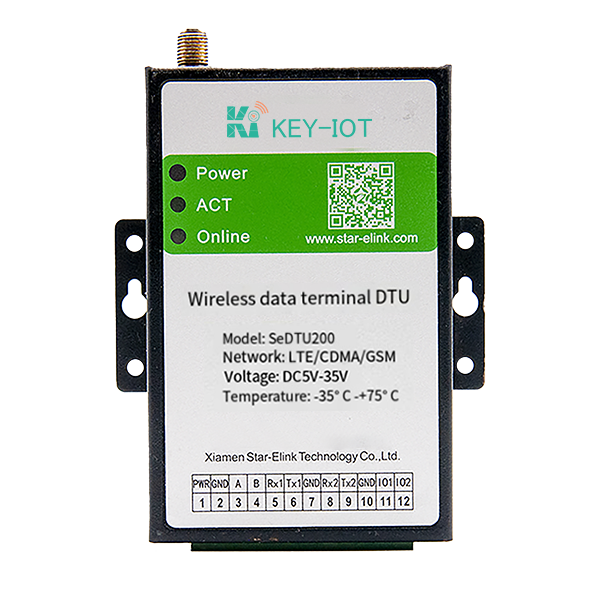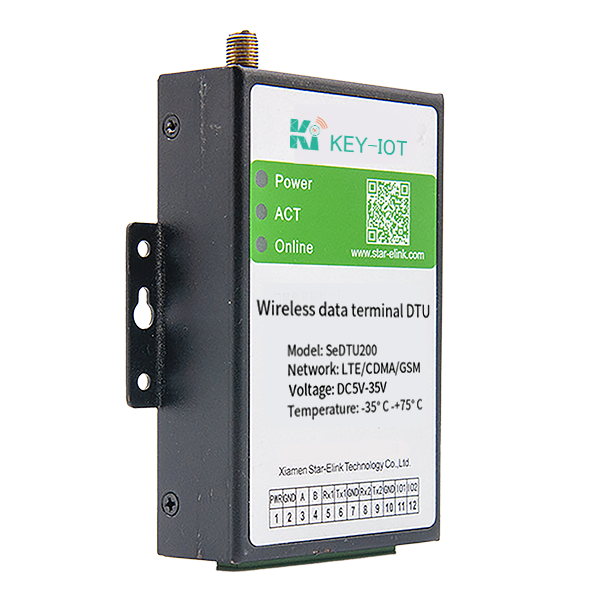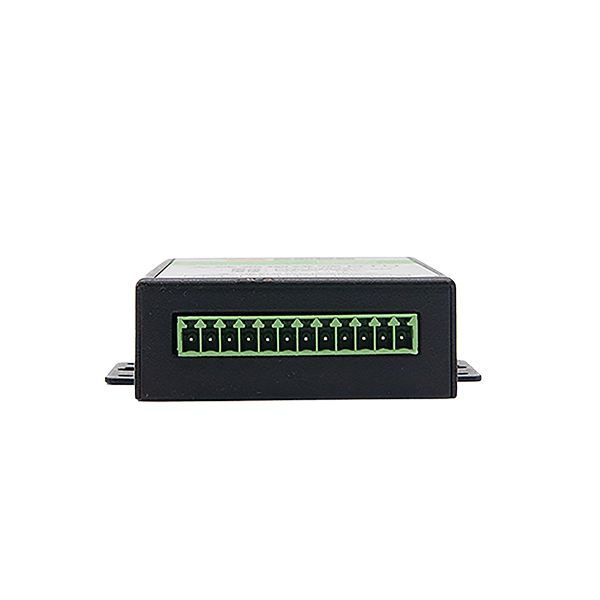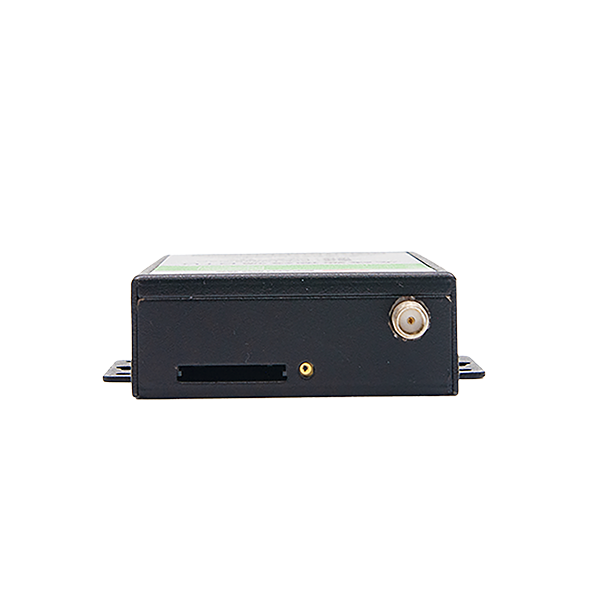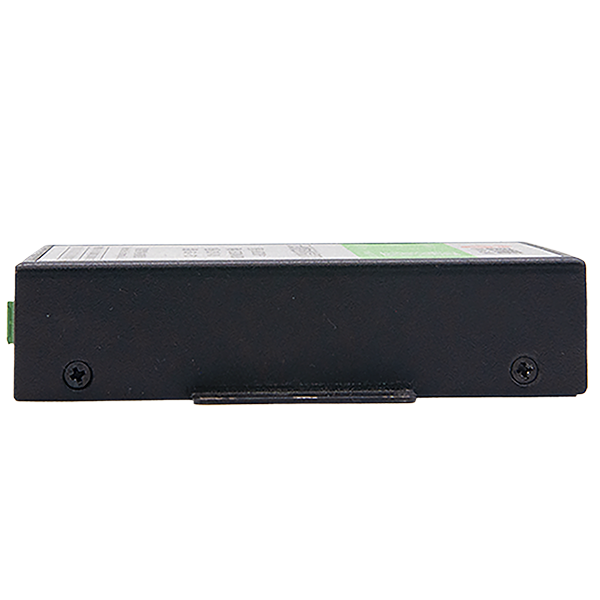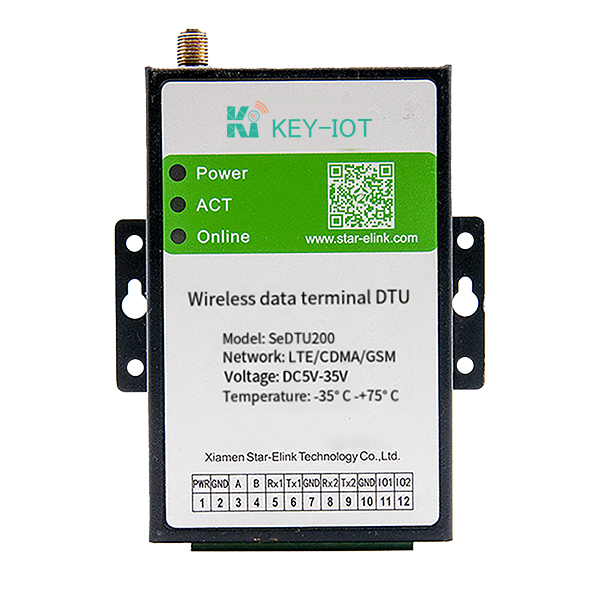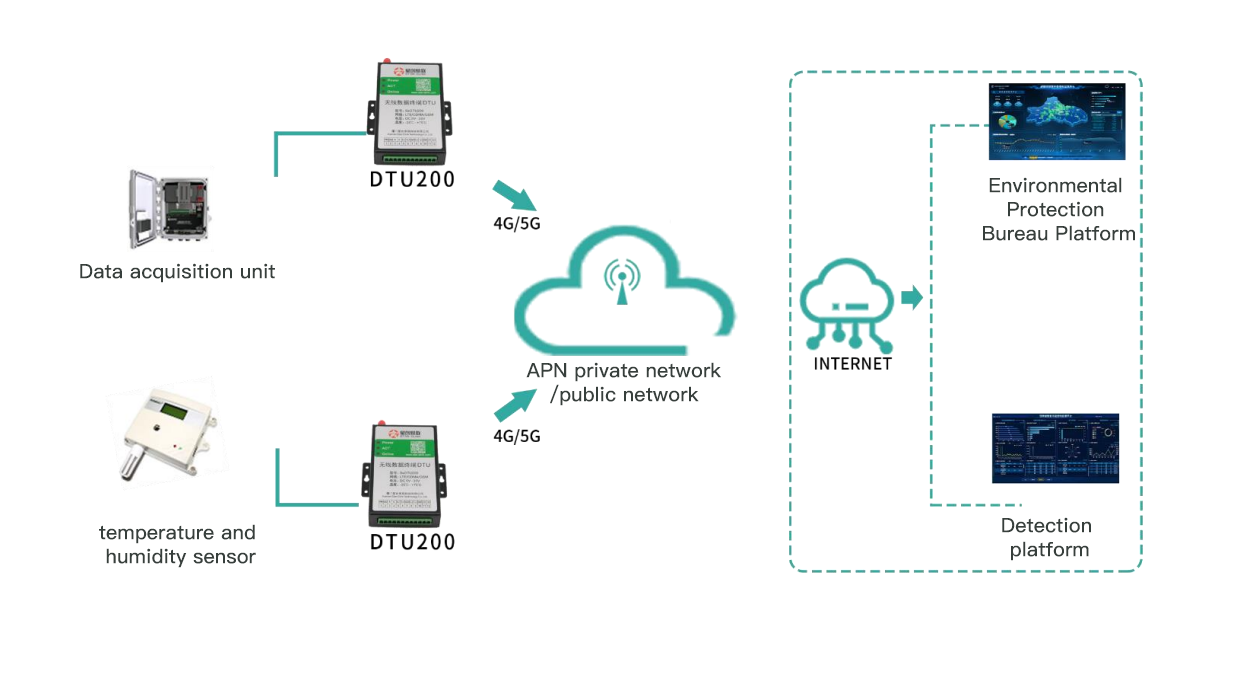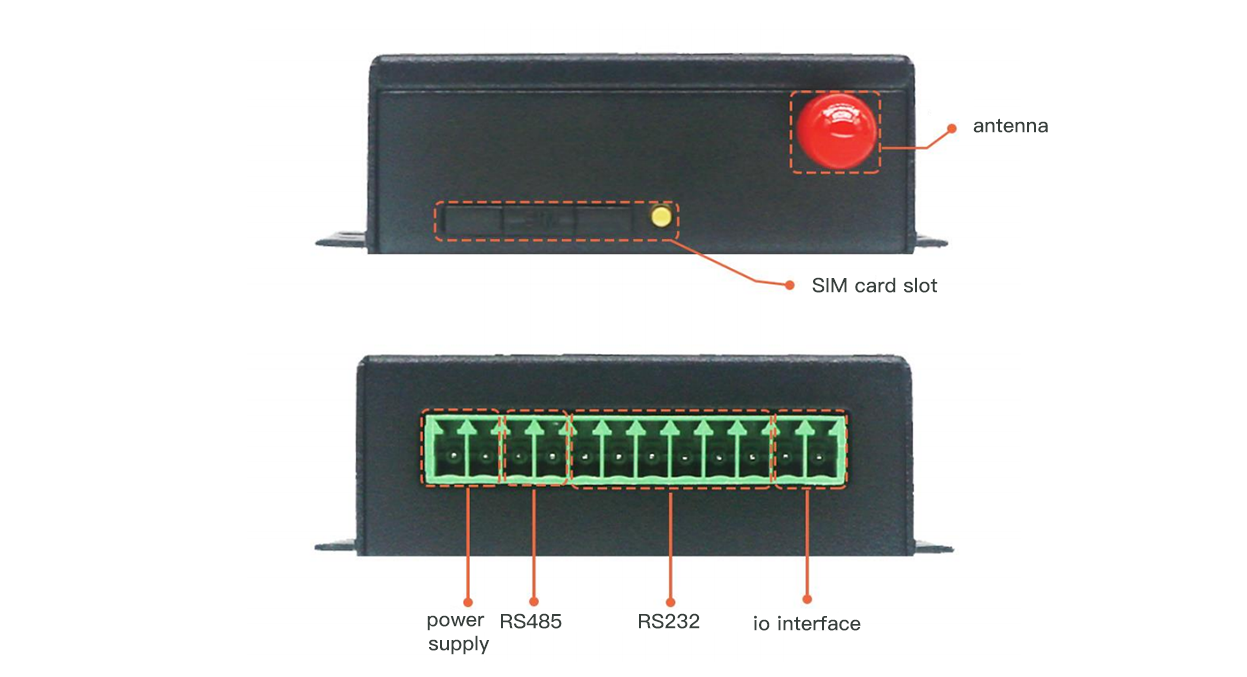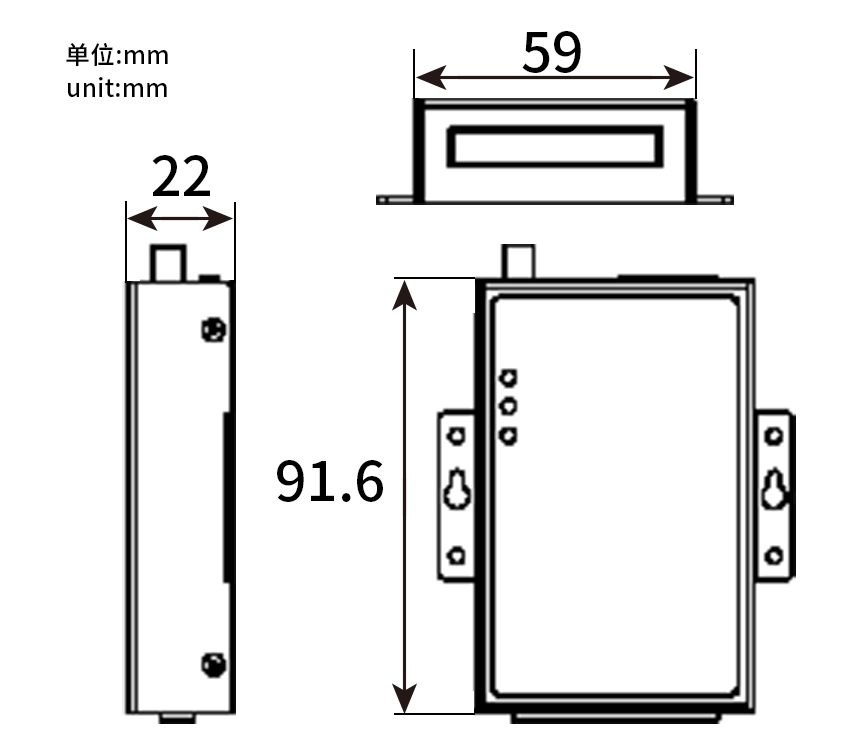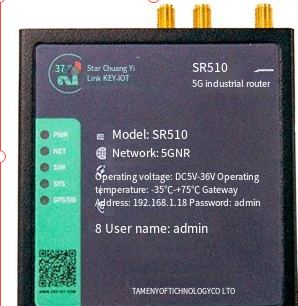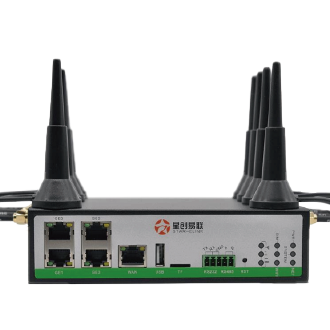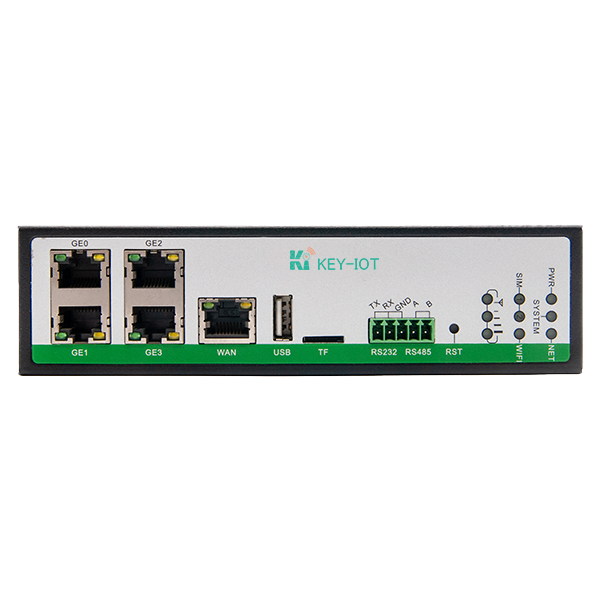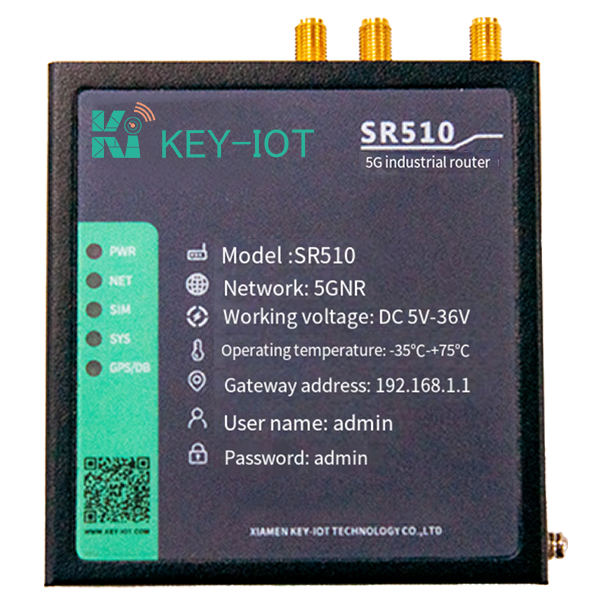4g LTE Modem(DTU200)
- Network SupportIndustrial-grade 4G module, supports seven-mode full network, supports NB module
- ModelDTU200
- VoltageExternal power adapter (DC·9V 1A)
- Interface2 RS232 and 1 RS485 (or RS422) interfaces, built-in 15KV ESD protection
- BrandKEY-IOT
- Dimensions91*58.5*22mm
Latest
CasesIndustrial Robot Remote Control Application Case Study
456The application cases of industrial robot remote control primarily demonstrate the pursuit of improved production efficiency, cost reduction, and operational safety in modern industrial production.
Industrial Robot Remote Control Application Case Study
413The application cases of industrial robot remote control primarily demonstrate the pursuit of improved production efficiency, cost reduction, and operational safety in modern industrial production.
Earthquake monitoring solutions
411Hey, have you heard about the awesome earthquake monitoring system they set up in Chile? They're using SR800 industrial 5G routers, and it's making a huge difference!
5G Industrial Router’s Extreme Applications: Unmanned Factories, Remote Operation and Maintenance, Real-time Monitoring
616We deployed multiple SR510 routers inside the substation, and through their powerful edge computing capabilities, we achieved on-site analysis and processing of massive equipment operation data. The SR510 supports up to 32 DI/DO and 8 AI/AO interf...
loading...
已经是到最后一篇内容了!
Q & A
We have a large stock of products readily available, and we can typically ship orders within 1-3 business days. For customized products, the shipping time may vary depending on the specific requirements, but it generally takes around 2-4 weeks. We collaborate with several renowned logistics companies, offering a variety of express delivery options such as SF Express, EMS, and DHL to ensure timely and secure product delivery.
In addition to our standard products, we also offer custom development services to our clients. Whether you have any special feature requirements or application scenarios, our experienced engineering team can provide customized development and optimization based on your needs. The customization process typically takes 1-3 months, and we work closely with you to ensure that the final delivered product fully meets your requirements.
All our products undergo rigorous testing and come with a 1-year warranty. If any quality issues arise during the warranty period, we provide free repair or replacement services. Beyond the warranty period, we also offer long-term technical support and maintenance services. Customers can contact our after-sales team via phone, email, or other channels, and we will respond promptly and provide solutions.
Recommendations
Dual 5G Industrial Router(SR800-D)
- Network Support2 industrial-grade 5G modules or 1 industrial-grade 5G module + 1 industrial-grade 4G module
- ModelSR800-D
The SR800-D is a cutting-edge dual 5G industrial router that revolutionizes wireless connectivity for mission-critical applications.
Industrial Router 4g+5g(SR800-02)
- Network Support1 industrial-grade 5G module, 1 industrial-grade 4G module
- ModelSR800-02
The SR800-02 industrial router understands this critical requirement and offers a range of features to ensure uninterrupted connectivity.
Upgraded waterproof 5G CPE(SR810)
- Network SupportIndustrial-grade 5G module
- ModelSR810
SR810, a cutting-edge waterproof 5G CPE designed to provide secure and uninterrupted connectivity for your IoT applications.
5g Industrial Router(SR510)
- Network SupportNetwork Support Industrial-grade 5G module
- ModelSR510
The StarRouter 510 (SR510) is an advanced 5G industrial router integrating 4G/5G networks, VPNs, and industrial-grade features. With 5G NR high-speed connectivity, dual-network 4G/5G backup, multiple interfaces, rugged design, and extensive securi...
loading...
已经是到最后一篇内容了!
 KEY-IOT
KEY-IOT
